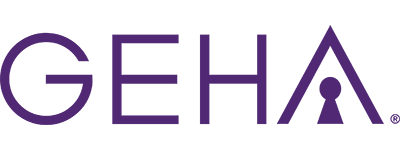Since 1949, the month of May has been observed as Mental Health Awareness Month. While we have made a lot of progress in diagnosing and treating mental health disorders, we still have a lot to learn. Stigma still surrounds mental health, and this can prevent people from recognizing their problem and reaching out for help. Fortunately, we can fight this stigma by better understanding mental health and sharing the appropriate information, which is a large focus of Mental Health Awareness Month.
In honor of Mental Health Awareness Month, let’s discuss the most common therapeutic techniques used to treat mental health disorders. Understanding what these therapies entail can help you become comfortable and familiar with them.
Cognitive Behavioral Therapy (CBT)
CBT is effective at treating a wide range of problems, including depression, anxiety and substance use. In fact, studies show that CBT is just as effective, or more effective than, other forms of therapy or medication. The goal of CBT is to change negative thinking patterns. By working with a trained therapist, you can gain a better understanding of your behaviors, the thinking that is creating problems and how to overcome challenges.
Your therapist may also do exercises with you, such as role playing, calming your mind/body and facing your fears. CBT is highly collaborative, and your therapist will give you an individualized treatment plan based on your needs and goals. Your therapist may also assign “homework” outside of therapy hours, giving you the opportunity to practice new ways of thinking and behaving in the real world.
Dialectical Behavior Therapy (DBT)
DBT is a type of talk therapy based on CBT principles. The difference is that DBT also focuses on accepting who you are at the same time. The goals of DBT are to help you understand your feelings, learn skills to manage these feelings and be able to make positive changes in your life.
While DBT was originally developed to treat borderline personality disorder, research shows that it can also help with self-harm, suicidal thoughts, depression, eating problems and mental health disorders. You can participate in DBT in a one-on-one or group format. During these sessions, your therapist will encourage you to be aware of your thoughts and feelings without judgment, as well as practice acceptance, compassion and mindfulness.
Family Therapy
Family therapy is another type of psychotherapy that involves the family unit, which can include parents and siblings or even aunts and uncles. The purpose of this therapy is to improve the relationships and behaviors between family members.. Your therapist may also request to speak to members individually.
When one or more family members has a mental health disorder, it can disrupt the family’s balance and harmony. This can lead to feelings of anger and resentment, and it can even cause family members to take on unhealthy roles to cope. By participating in family therapy, members can learn about mental health, how to engage in effective communication and how to support one another.
Group Therapy
In group therapy, a small number of people meet together under the guidance of a trained mental health professional. Usually these groups consist of 5-15 people and last an hour or two each week, giving members the opportunity to share their experiences and learn from one another. At first, some people feel uneasy about sharing personal details with strangers, but most build trust quickly. When they feel comfortable in the group, they are more open to sharing and receiving feedback.
Many people participate in group therapy for an extended period of time, as they value the support and understanding they get from the group, as well as feelings of acceptance and belonging. Group therapy also costs less than other forms of therapy and gives you the chance to hear other points of view.
Eye Movement Desensitization and Reprocessing (EMDR) Therapy
EMDR is a mental health treatment technique that involves moving your eyes in a specific way while processing traumatic memories. It is most commonly used to treat trauma-related disorders like PTSD, though it can also be used to treat anxiety, depression, dissociative disorders and obsessive-compulsive disorders.
Compared to other therapies, EMDR is relatively new. It relies on the AIP model, which is a theory about how your brain stores memories. According to this theory, the brain stores normal and traumatic memories differently. When things are normal, everything moves smoothly. But when things are not, there’s a disconnect between what your brain stores and what you experience.
Because of the way the brain stores this information, you don’t heal correctly, and your brain doesn’t get the message that the threat is over. Therefore, when you’re exposed to certain triggers, you get a negative response. EMDR aims to process and heal these traumatic memories that are stored in the brain. It’s safe, non-invasive and effective.
Rational Emotive Behavior Therapy (REBT)
REBT is a therapy that focuses on managing unhealthy thoughts, emotions and behaviors. It’s different from other therapies in that it requires more action instead of just passively talking. When you have irrational beliefs, it can cause you to experience more psychological distress, which leads to unhealthy or self-destructive behaviors.
REBT focuses on challenging negative thoughts and emotions—guilt, shame, depression, anxiety, low self-worth—and replacing them with healthier, more constructive ones. There are a number of strategies used in REBT, such as visualization and reframing your thinking. It uses the ABCDE model:
- Activating event: External event that activates how you think or feel
- Belief: Your automatic belief about the event and yourself
- Consequence: Your emotional or behavioral response
- Dispute: Questing or disputing your beliefs
- Effective behavior: Resisting the irrational belief and changing your behavior
Motivational Interviewing (MI)
This counseling approach is intended to help people find the motivation to make positive behavior changes. It’s especially beneficial for those who are on the fence about changing their behavior, such as those who want to quit using alcohol but are unsure about what their life will look like without it.
Motivational interviewing is unique in that it empowers individuals to take responsibility t for their growth and recovery. You will work with a therapist during your MI sessions, but they are not the authority figure per se. Instead, the power to change rests within you.
Mental Health Treatment in Prescott, Arizona
As you can see, there are many different therapeutic approaches available for addressing mental health—and this is just the tip of the iceberg! When you seek treatment at Wolf Creek Recovery, you can expect a personalized treatment plan that includes the therapies that can benefit you most. We also complement these therapies with holistic modalities, such as meditation and art. To learn more about our programs and how to start your path to healing, contact Wolf Creek Recovery today.












